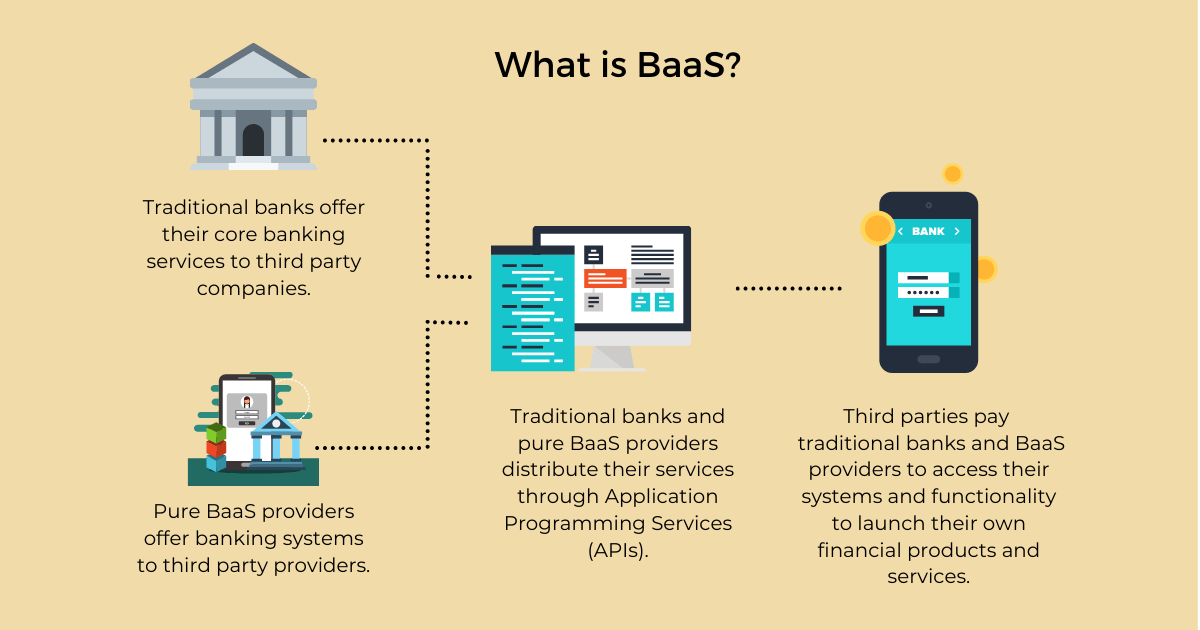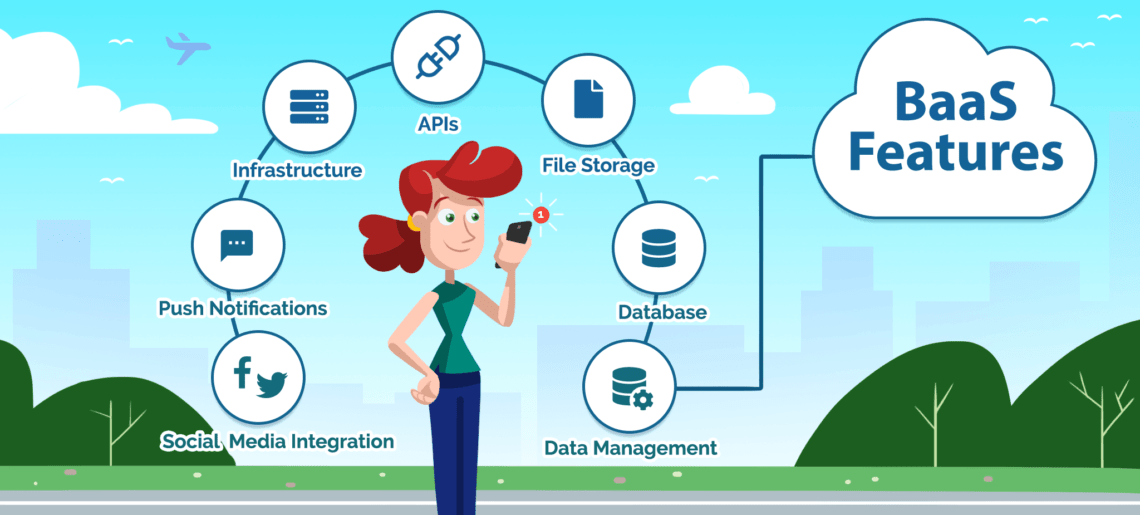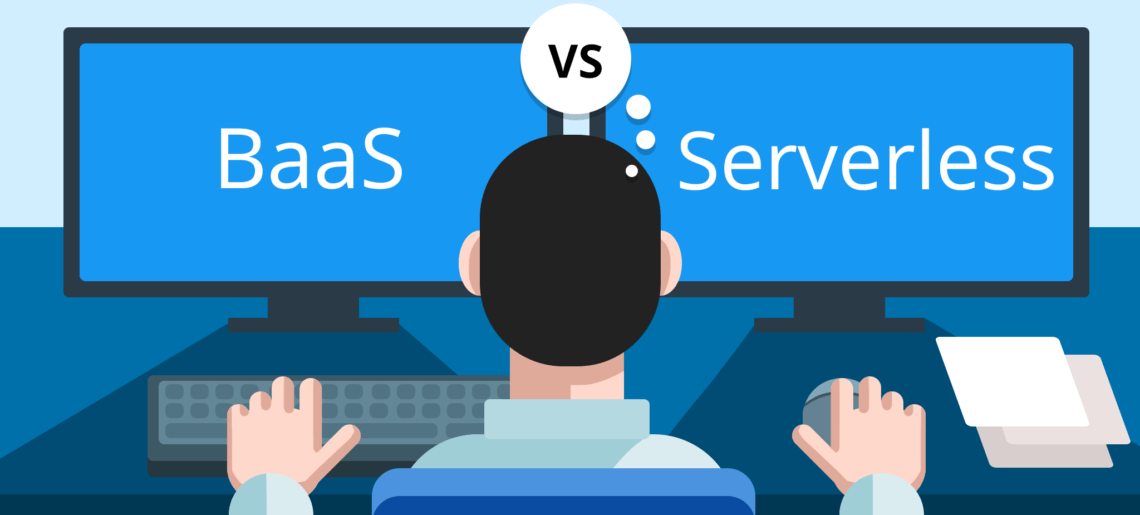What is the BaaS or the Backend-as-a-Service vs. server-less

- Backend-as-a-Service or the BaaS enables or allows the developers to focus and concentrate more on the frontend portion of their applications and leverage the backend services without actually having to build or maintain them. The BaaS and the serverless computing share some similarities, and many of the providers offer these both, but the two models have several differences as well.
In this blog post we will be taking a look at the following topics:
- What is the Serverless?
- Why should you Use Serverless?
- Serverless Versus the Containers
- Serverless and the Javascript
- Glossary of the Terms
Learning Objectives
After reading this blog post you will be able to:
- Define what is BaaS
- Define the term MBaaS
- Understand and comprehend the differences between serverless computing and BaaS
- Understand and comprehend how BaaS and PaaS are different
So, what is BaaS?

- Backend-as-a-Service (BaaS) is a cloud service module wherein the developers outsource all of the behind-the-scenes aspects of a web or mobile application so that they only have to write and maintain as well as put their entire focus on the frontend. BaaS vendors provide the users with some pre-written software for activities that take place on the servers, such as the user authentication, database management, remote updating, and also push notifications (for mobile apps), as well as a functionality for the cloud storage and hosting.
- Try thinking of developing an application without actually using a BaaS provider as directing a movie. A film director is wholly responsible for overseeing and keeping an eye or managing camera crews, lighting, set construction, wardrobe, actor casting, as well as the production schedule, in addition to this, actually indulging in the process of filming and directing the scenes that will appear in the movie. Now try to imagine if there was a service that took care of all the behind-the-scenes activities so that all that the director had to do was direct and shoot the scene. That’s the idea behind BaaS: The vendor takes care of the ‘lights’ and the ‘camera’ (or, the server-side* functionalities) so that the director (the developer) can just concentrate and focus on the ‘action’ – what the end user sees and experiences or goes through.
- BaaS enables and allows the developers to focus on writing the frontend application code. Via APIs (which are a way for a program to make a request of another program) and SDKs (which are kits for the building software) which is offered by the BaaS vendor, they are able to integrate and combine all of the backend functionality that they need, without actually building the backend themselves. They also don’t have to manage servers, virtual machines, or containers to keep the application running. As a result of this, they can build and launch mobile applications and web applications (including single-page applications) a lot quicker.
*Server-side refers to everything that is hosted on or takes place on a server instead of on a client in the Internet client-server model.
What is the Mobile-Backend-as-a-Service (MBaaS)?
- Mobile-Backend-as-a-Service (MBaaS) is BaaS intended specifically for the purpose of building apps for mobile. While there are some sources that consider that BaaS and MBaaS to be basically interchangeable terms, BaaS services do not necessarily have to be used for the purpose of building mobile applications.
What is included and inculcated in the term BaaS?
BaaS providers offer the customers with a number of server-side capabilities. For example:
- Database management
- Push notifications
- Remote updating
- Cloud storage (for user-generated content)
- Other platform- or vendor-specific functionalities; for instance, Firebase offers Googlesearch indexing
- User authentication
- Hosting
BaaS and MBaaS providers include the Google Firebase and Microsoft Azure.
What are the differences between BaaS and serverless computing?

- There is some overlap or similarities between BaaS and serverless computing, because in both the developer only has to write their application code and does not have to think about the backend. In addition to this, many of the BaaS providers also offer serverless computing services. Anyway, there are significant operational differences between the applications built using BaaS and a true serverless architecture.
How the application is constructed?
- The backends of serverless applications are broken down into functions, each of the function responds to events and performs one action only (see What is FaaS?). BaaS server-side functionalities, meanwhile, are constructed and built however the provider wants, and developers don’t actually have to concern themselves with the load of coding anything other than the frontend of the application.
When code runs
- Serverless architectures are event-driven or event based, meaning that they run in response to the events. Each of the function only runs when it is triggered or instigated by a certain event, and it does not run otherwise in any other situation. Applications that are built with BaaS are usually not event-driven, meaning that they require a lot more server resources.
Where code runs
- Serverless functions can be run from anywhere on any machine, as long as they are still in the communication with the rest of the application, which makes it easier and possible to incorporate edge computing into the application’s architecture by running the code at the network’s edge. BaaS is not necessarily or mandatorily set up to run code from anywhere, at any time (although it can be, depending on the provider).
How the application scales?
- Scalability is one of the biggest and the largest differentiators separating serverless architectures from other kinds of architectures. In serverless computing, the application automatically scales up as usage increases on its own. The cloud vendor’s infrastructure starts up ephemeral instances of each function as required. BaaS applications are not set up to scale in this way unless the BaaS provider also offers you with serverless computing and the developer builds and constructs this into their application.
What is the major difference between BaaS and Platform-as-a-Service (PaaS)?
- PaaS provides us with a platform via the cloud for developers to build their applications. Like serverless computing as BaaS, Platform-as-a-Service (PaaS) eliminates the need for the developer to build and manage the application’s backend. However, PaaS does not include pre-built server-side application logic, such as the functionality of push notifications and user authentication. PaaS offers developers a lot more flexibility, while BaaS offers more functionality.
To know about Industrial Based Learning and and more information like this make sure to register yourself at NullClass now !


0 responses on "What is the BaaS or the Backend-as-a-Service vs. server-less"